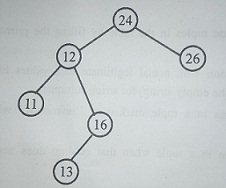Welcome to the Data Structures and Algorithms MCQs Page
Dive deep into the fascinating world of Data Structures and Algorithms with our comprehensive set of Multiple-Choice Questions (MCQs). This page is dedicated to exploring the fundamental concepts and intricacies of Data Structures and Algorithms, a crucial aspect of UGC CBSE NET Exam. In this section, you will encounter a diverse range of MCQs that cover various aspects of Data Structures and Algorithms, from the basic principles to advanced topics. Each question is thoughtfully crafted to challenge your knowledge and deepen your understanding of this critical subcategory within UGC CBSE NET Exam.
Check out the MCQs below to embark on an enriching journey through Data Structures and Algorithms. Test your knowledge, expand your horizons, and solidify your grasp on this vital area of UGC CBSE NET Exam.
Note: Each MCQ comes with multiple answer choices. Select the most appropriate option and test your understanding of Data Structures and Algorithms. You can click on an option to test your knowledge before viewing the solution for a MCQ. Happy learning!
Data Structures and Algorithms MCQs | Page 8 of 27
Explore more Topics under UGC CBSE NET Exam

(a) To implement Abstract Data Type, a programming language require a syntactic unit to encapsulate type definition.
(b) To implement ADT, a programming language requires some primitive operations that are built in the language processor.
(c) C++, Ada, Java 5.0, C#2005 provide support for parameterised ADT.
Which one of the following options is correct?
(a) Static variables (i) Local variables in Pascal
(b) Stack dynamic (ii) All variables in APL
(c) Explicit heap dynamic (iii) Fortran 77
(d) Implicit heap dynamic (iv) All objects in JAVA
Codes:
(a) (b) (c) (d)
(a) Huffman codes (i) O(n2)
(b) Optimal polygon triangulation (ii) θ(n3)
(c) Activity selection problem (iii) O(nlgn)
(d) Quicksort (iv) θ(n)
Codes:
(a) (b) (c) (d)
Suggested Topics
Are you eager to expand your knowledge beyond Data Structures and Algorithms? We've curated a selection of related categories that you might find intriguing.
Click on the categories below to discover a wealth of MCQs and enrich your understanding of Computer Science. Happy exploring!








